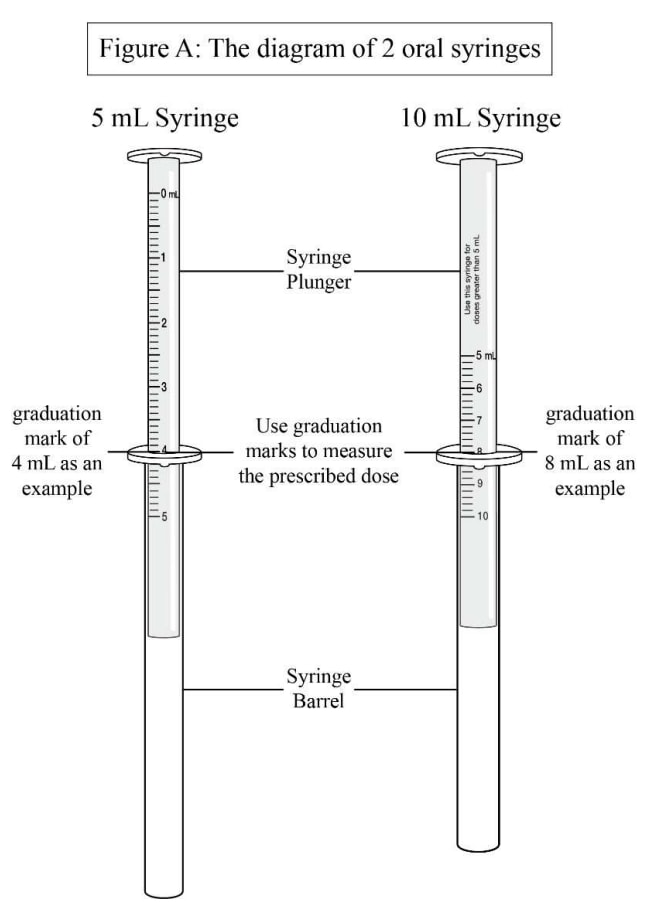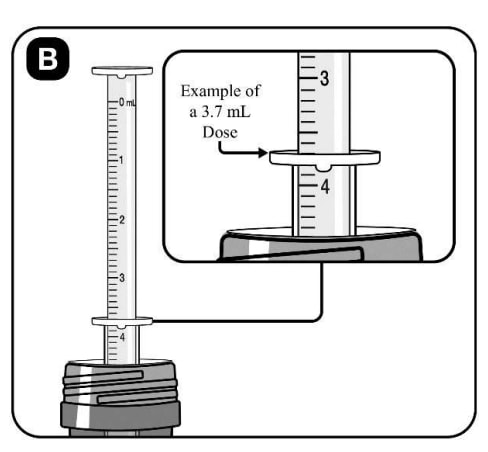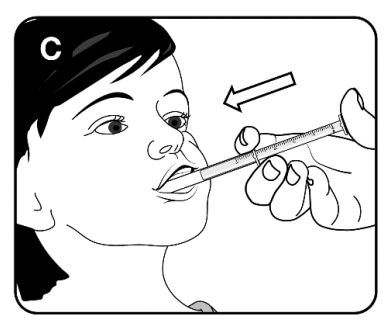What is Ermeza?
Ermeza is a prescription medicine that contains a hormone called levothyroxine which is normally produced by the thyroid gland. Ermeza is used in adults and children, including newborns:
- to replace or give extra levothyroxine when the thyroid does not produce enough of this hormone;
or - with surgery and radioiodine therapy to manage a type of thyroid cancer called thyroid-dependent well-differentiated thyroid cancer.
Ermeza should not be used to treat people who are recovering from swelling of the thyroid gland (thyroiditis) and whose bodies do not produce enough levothyroxine for a short time.
What is the most important information I should know about Ermeza?
Do not use Ermeza to treat weight problems or weight loss.
Who should not take Ermeza?
Do not take Ermeza:
- if your adrenal glands are not working well and you have not been treated for this problem; or
- if you are allergic to glycerin or edetate disodium, the inactive ingredients in Ermeza.
What should I tell my healthcare provider before taking Ermeza?
Before you take Ermeza, tell your doctor about all of your medical conditions, including if you:
- have or have had heart problems.
- have or have had thyroid nodules.
- have adrenal or pituitary gland problems.
- have any food or drug allergies.
- have low red blood cell count (anemia).
- have diabetes.
- have weak bones (osteoporosis).
- have or had a history of blood clotting problems.
- have recently received radiation therapy with iodine (such as I-131).
- plan to have surgery.
- are pregnant or plan to become pregnant. Your doctor may need to change your Ermeza dose while you are pregnant.
- are breastfeeding. Levothyroxine can pass into your breast milk. Talk to your doctor about the best way to feed your baby if you take Ermeza.
Tell your doctor about all the medicines you are taking including prescription and over-the-counter medicines, vitamins and herbal supplements. Ermeza may affect the way other medicines work, and other medicines may affect how Ermeza works so your doctor may have to adjust the amount of medicines you take. You can ask your doctor or pharmacist for a list of medicines that interact with Ermeza.
How should I take Ermeza?
- Ermeza is for oral use only. Do not inhale, inject, or place Ermeza in the eyes.
- See the detailed “Instructions for Use” that come with Ermeza for information on the right way to take your dose of Ermeza.
- Take Ermeza exactly as your doctor tells you to take it.
- Your doctor will tell you how much Ermeza to take each day.
- Your doctor may change your dose, if needed.
- Take your dose of Ermeza 1 time each day 30 minutes to 1 hour before breakfast on an empty stomach.
- Certain medicines can interfere with how levothyroxine is absorbed by your body. Take Ermeza:
- at least 4 hours before or after you take medicines that contain calcium carbonate or iron (ferrous sulfate); and
- at least 4 hours before you take medicines that contain bile acid sequestrants or ion exchange resins.
Know the medicines you take. Ask your doctor or pharmacist for a list of these medicines, if you are not sure.
- Certain foods including soybean products (such as infant formula and soybean flour), cotton seed meal, walnuts, dietary fiber, and grapefruit juice can affect your treatment and dose of Ermeza. Talk to your doctor if you eat or drink these foods.
- Use Ermeza within 90 days of opening the bottle.
- Your doctor should do certain blood tests while you are taking Ermeza and may change your daily dose of Ermeza as needed. Keep taking Ermeza unless your doctor tells you to stop or to change your dose.
It may take weeks before you notice your symptoms getting better. Keep using this medicine even if you feel well. In case of overdose, get medical help or contact a live Poison Control expert at 1-800-222-1222. Advice is also available online at www.poison.org.
What are the possible side effects of Ermeza?
Ermeza may cause serious side effects, including:
- heart problems. You may experience an increased heart rate, chest pain and irregular heartbeat. Your risk of developing heart problems may be greater if you are elderly, you have heart problems, or you take too much Ermeza. Your doctor may reduce your dose or stop treatment with Ermeza for a while if you develop heart problems.
- worsening diabetic control. If you are diabetic, it may be harder to control your blood sugar levels causing hyperglycemia while taking Ermeza. Check your blood sugar levels closely after starting, changing, or stopping treatment with Ermeza. Your doctor may have to change your diabetes treatment plan.
- weak or brittle bones. Your risk of developing weak or brittle bones may be greater if you are post-menopausal or you take too much Ermeza.
The most common side effects of Ermeza include:
- fast or irregular heartbeat
- irritability
- vomiting
- chest pain
- sleep problems (insomnia)
- diarrhea
- shortness of breath
- tremors
- sweating a lot
- leg cramps
- muscle weakness
- heat intolerance
- headache
- change in appetite
- fever
- nervousness
- weight loss or weight gain
- changes in menstrual period
- hives or skin rash
Other side effects may include partial hair loss during the first months of treatment with Ermeza. This usually lasts a short period of time (temporary).
These are not all the possible side effects of Ermeza. Call your doctor for medical advice about side effects. You may report side effects to FDA at 1-800-FDA-1088.
General information about the safe and effective use of Ermeza
Medicines are sometimes prescribed for purposes other than those listed in a Patient Information leaflet. Do not use Ermeza for a condition for which it was not prescribed. Do not give Ermeza to other people, even if they have the same symptoms as you. It may harm them. You can ask your pharmacist or doctor for information about Ermeza that is written for health professionals.
How should I store Ermeza?
- Store Ermeza at room temperature between 68°F to 77°F (20°C to 25°C).
- Protect from light.
- Store Ermeza in the original bottle. Use Ermeza within 90 days of opening the bottle.
Keep Ermeza and all medicines out of the reach of children.
What are the ingredients in Ermeza?
Active ingredient: levothyroxine sodium
Inactive ingredients: edetate disodium, glycerin, and purified water
For more information, call Mylan at 1-877-446-3679 (1-877-4-INFO-RX).
Instructions for use for Ermeza
Ermeza [er-meh-zah]
(levothyroxine sodium oral solution)
Read this Instructions for Use before you start taking Ermeza and each time you get a refill. There may be new information. This information does not take the place of talking to your healthcare provider about your medical condition or your treatment.
- Keep Ermeza and all medicines out of reach of children.
- Be sure that you read, understand and follow these instructions carefully to ensure correct dosing of the oral solution.
- Always check the expiration date of your Ermeza before use. Do not use if the expiration date has passed.
- Throw away (discard) any unused Ermeza after 90 days of first opening the bottle.
- Store Ermeza at room temperature between 68°F to 77°F (20°C to 25°C) with the oral syringes in the original carton.
Important Information You Need to Know Before Taking Ermeza.
For oral use only (take by mouth).
Two Ermeza syringes are provided in the carton (see Figure A):
- 5 mL syringe for doses up to 5 mL. Each graduation mark represents 0.1 mL. Figure A shows a graduation mark of 4 mL as an example.
- 10 mL syringe for doses over 5 mL. Each graduation mark represents 0.2 mL. Figure A shows a graduation mark of 8 mL as an example.
Do not wash the syringes in a dishwasher, use warm water only.

Step 1: Preparing the Dose
- Hold the bottle firmly with 1 hand and then push down on the bottle cap and turn it counterclockwise to remove it.
- Ensure the syringe plunger is pushed all the way into the barrel to remove any air from the syringe.
- Place the oral syringe provided into the medicine within the bottle (See Figure B).
- Pull back the plunger, ensuring the end remains in the medicine, until the graduation mark for the dose prescribed by your healthcare provider lines up with the top surface of the syringe barrel (See Figure B). Figure B shows a dose of 3.7 mL as an example.
- If you see any large air bubbles in the barrel of the syringe, hold the syringe over the bottle to remove them and repeat Step 1.

Step 2: Taking Ermeza
- Place the end of the oral syringe into the corner of the mouth toward the inside cheek (See Figure C).
- Slowly push the plunger down until the syringe is empty.
- Replace cap onto bottle and screw in a clockwise direction until tight.

Step 3: Cleaning and Storage
- Pull plunger straight out of the oral syringe barrel (See Figure D). Rinse the barrel and plunger with warm water and leave to air dry.
- When dry, place the plunger back inside the oral syringe barrel and put back inside the carton supplied and store at room temperature between 68°F to 77°F (20°C to 25°C).
Instructions for use approved 04/2022.




